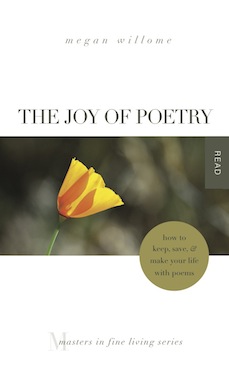At Tweetspeak, books matter. We host a book club, we review books, and we publish them at TS Poetry Press. We’re dedicated to literacy — for life. And we want to learn from each other about reading in the wild.
Do you want to be a wild reader? Are you reading wildly already? We’re using Donalyn Miller’s Reading in the Wild: The Book Whisperer’s Keys to Cultivating Lifelong Reading Habits to explore what it means to be a wild reader — someone most likely to embrace literacy for life. Read through these 5 characteristics and see which ones fit your reading style and which you might incorporate this month.
5 Main Characteristics of Wild Readers
1. They dedicate time to read.
Sometimes reading takes no time at all, like when you dive into a novel and let it swallow you. That happened unexpectedly this month when I heard author Amy Gentry speak at an event sponsored by the Writers League of Texas. She writes thrillers, which is not a genre I often read, but she was such a compelling speaker on the subject of character that I read Good as Gone in one fell swoop (with the caveat that I did skim a few of the more violent chapters). Then I spent a morning journaling about the novel. It was time well-spent.
2. They self-select reading material.
It’s been a Barbara Cooney month. March’s Children’s Book Club selection was Roxaboxen. In the Through the Looking Glass workshop we read Miss Rumphius, and I self-selected two more of Cooney’s books from the library. My favorite was Ox-Cart Man, actually by poet Donald Hall and illustrated by Cooney. It begins where any other book would end, with the man selling his wares in the fall. Because here, losing it all is the beginning of a new year of stitching and whittling and carving and planting and caring for animals. The book ends in May, but we know that come October, the whole cycle will repeat.
3. They share books and reading with other readers.
Glynn Young recommended Tyndale: The Man Who Gave God an English Voice by David Teems in the comment section for January’s Reading in the Wild. I’d been reading a lot of fiction, and history seemed like a perfect change of pace. It’s primarily about William Tyndale’s translation of the New Testament and parts of the Old Testament into English, and it’s a celebration of good words. If I were to reduce this book to a single sentence it would be this one: “And again, the laurel granted to the King James Bible, the high honor it has enjoyed in its four hundred years, rightly belongs to William Tyndale.” Or maybe, of Tyndale’s technique, “One word replaces three. Three syllables replace six.” Teems writes with love and a bit of flair to demonstrate that Tyndale had as much influence on the development of English as Shakespeare.
4. They have reading plans.
Which brings me to The Bard. Remember last month I said my plan was to read Romeo & Juliet? Well, I did. Guess what? With Callie Feyen’s annotations, it wasn’t hard. Also, Sara Barkat’s essay “Shakespeare Favored the Girl” gave me needed perspective. I’ve tended to put Juliet in a box she doesn’t deserve, not recognizing that she acts with agency — “something that keeps being denied her by her parents and her position,” Barkat writes. I also appreciated reading these passages (many of which I’ve come across as poems) in context, as part of a narrative. If I did it, you can too!
5. They show preferences.
My reading preferences do not include phrases like “rainbow magic” or “crafts fairies” or “flowy, sea-green dress sparkling with silver stars.” But I read a book — with a pink cover, no less — that included all those words. Why? Because I could not resist Libby, the Writing Fairy by Daisy Meadows, from a Scholastic series. (Also, it cost 25 cents at the resale shop.) The next time I’m writing a story that’s going awry, I’ll know who to blame: “It’s because of Jack Frost!”
March’s Pages
Finished
Adult
Good as Gone, Amy Gentry
Poems, C.S. Lewis (started in January)
Romeo & Juliet: the full play—includes essays and annotations by Callie Feyen of The Teacher Diaries, by William Shakespeare, edited Sara Barkat
Tyndale: The Man Who Gave God an English Voice, David Teems
Early Readers and Picture Books
Eleanor, Barbara Cooney (This was much better than the picture book biography I read last month about Roosevelt)
Miss Rumphius, Barbara Cooney
Ox-Cart Man, Donald Hall, illus. Barbara Cooney
Instructions, Neil Gaiman, illus. Charles Vess
Middle Grade and YA
A Wrinkle in Time, by Madeliene L’Engle (for next week’s Children’s Book Club, April 13)
Libby, the Writing Fairy, Daisy Meadows
Sliced (Got what I needed and moved on or plan to finish someday.)
None
Abandoned (Not my cup of tea, it bogged down quickly, or others beckoned.)
None
Started (Will I finish? Of course!)
The Which Way Tree, Elizabeth Crook
Your turn
1. Share anything about you and the 5 main wild reader characteristics. How do you display them, or wish you did, or plan to in the future?
2. Share your March pages. Finished, sliced, started, and abandoned are all fair game.
Photo by marco monetti, Creative Commons, via Flickr. Post by Megan Willome, author of The Joy of Poetry.
__________
“Megan Willome’s The Joy of Poetry is not a long book, but it took me longer to read than I expected, because I kept stopping to savor poems and passages, to make note of books mentioned, and to compare Willome’s journey into poetry to my own. The book is many things. An unpretentious, funny, and poignant memoir. A defense of poetry, a response to literature that has touched her life, and a manual on how to write poetry. It’s also the story of a daughter who loses her mother to cancer. The author links these things into a narrative much like that of a novel. I loved this book. As soon as I finished, I began reading it again.”
—David Lee Garrison, author of Playing Bach in the D. C. Metro
- Perspective: The Two, The Only: Calvin and Hobbes - December 16, 2022
- Children’s Book Club: A Very Haunted Christmas - December 9, 2022
- By Heart: ‘The night is darkening round me’ by Emily Brontë - December 2, 2022


Glynn says
As a followup up to the Tyndale biography, there’s Adam Nicolson’s “God’s Secretaries,” the story of the King James Version the Bible. The KJV borrowed a lot from Tyndale (as did Shakespeare), and I didn’t know how it was envisioned (by King James, if no one else) as a way to stop the continuing religious wars in Britain in the early 1600s.
My reading in March:
Mystery
A Newly Crimsoned Reliquary by Donna Fletcher Crow
A Time to Kill by Stephen Puleston
The Book of Mirrors by E.O. Chirovici
The Coven Murders by Brian Hare
The Man on the Train by Clara Benson
Faith
Journey on the Hard Side of Miracles by Steven Stiles
What is Repentance by R.C. Sproul
Absolute Surrender by Andrew Murray
Surrender by Michael Summers Jr.
Poetry
No Such Thing as Distance by Karen Paul Holmes
The Written Word: Poems by Shaun Masterton
Course by Athena Kildegaard
Fiction
The Guernsey Literary and Potato Peel Pie Society by Mary Ann Shaffer and Annie Barrows
Apologia by Alexi Kaye Campbell
The Old Curiosity Shop by Charles Dickens
Biography
The Life of Eugene Field by Slavon Thompson
Megan Willome says
Thanks for the tip on the KJV, Glynn!
I’ve read “The Gurnsey Literary and Potato Peel Pie Society” — learned a lot (and I prefer to learn within the context of story).
L.L. Barkat says
I’ve been reading for the Drawdown eco-challenge (a book out from Penguin Books, called, not suprisingly Drawdown). It’s amazing to me how much I actually don’t know about a topic I know a lot about!
And speaking of biographies, I might have to find one on John Tyndall (1820-1893), who I discovered was the first to prove the concept of the Greenhouse Effect. Um. I didn’t know anyone was even thinking about this so early on.
I also didn’t know that the first use of geothermal energy was by the Romans (I knew about their baths, but not that they heated their floors using this technology; this puts me in mind of today’s radiant heating, that I’ve always wished I could have underfoot!). Nor did I know that the U.S. is the world’s largest provider of energy using geothermal sources. (The first was in Boise, Idaho, in 1892! Followed by something in Oregon. And now we have apparently a quite large outfit north of San Francisco called “The Geysers.”)
All of this has my science side feeling quite happy. Sometimes I forget just how fascinated I am by the workings of this world and our ways of working in it.
To balance this, I’ve been reading a little book of food poems and a bit of the humorously and thoughtfully annotated Romeo & Juliet play you mention, Megan. It reminds one—this is why Shakespeare is Shakespeare. Incomparable language and vision. Still appeals.
I. Love. Ox-Cart Man.
Megan Willome says
It’s so good! Hat tip to Sharon Gibbs for that one. I asked her if Maine actually looks like that, and she said parts still do.
We do need balance in our reading, don’t you think? When we feed one side (say, science), then we sometimes need to feed another side (say, Shakespeare).
Kortney Garrison says
So glad that even though Wild Readers show preferences, you ventured out of your comfort zone for a compelling genre read!
Ox Cart Man is always a favorite. We also love Chanticleer and the Fox, an early Cooney work based on a Canterbury Tale.
And I’ve just put the Gaiman on hold. Looks like the perfect company for my next adventure!
Megan Willome says
Kortney, yes, Chanticleer was one of this month’s reads too.
I think genre fiction gets a bad rap. Sometimes we need a story that works within certain conventions. But then we can also appreciate when it veers. This one had some unusual reveals that I enjoyed.
Sandra Heska King says
Wrinkle in Time (finished) – Madeleine L’Engle
Romeo and Juliet (Companion) – Sara Barkat, Editor
Holes – Louis Sacchar (and watched the movie)
Miss Rumphius – Barbara Cooney
Ox Cart Man – Barbara Cooney
Goodnight Moon (again) – Margaret Wise Brown
Llama Llama Red Pajama (again) – Anna Dewdney
Bedtime for Frances – Russell Hoban
Eloise – Kay Thompson
Roxaboxen – Alice McLerran (illustrated by Barbara Cooney)
All the Canticos books – Susie Jaramillo
Fold Me a Poem – Kristine O’Connell George
Where the Wild Things Are – (again) – Maurice Sendak
And several sliced for class. 🙂
Megan Willome says
Sandy, it makes me so happy that other than the R&J companion edited by Sara Barkat, all the rest are children’s lit.
How is “Fold Me a Poem”? I’ve read several of George’s books, but not that one.
Sandra Heska King says
Pretty sure you’d love it. I had no idea one could make so many origami animals. George got the idea from watching a young boy folding them, “Watching him create his paper world, she was struck by the similarities between origami and poetry–how a few spare words, carefully chosen, can bring a scent to life, and how a few small folds, artfully made, can bring a sheet of paper to life.”
The illustrations are wonderful. You’d love it.